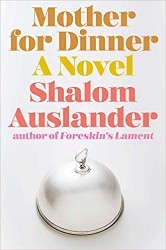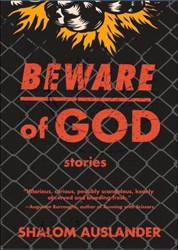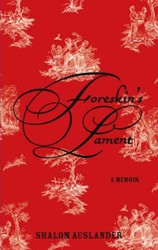The title of Shalom Auslander’s new novel is no joke. The fate of its hapless protagonist, Solomon Kugel, makes a strong case for the folly of optimism, the deceptions of life, and the comfort of death.
Kugel often thinks about dying. When we first meet him he is dreaming of what it would be like to suffocate to death in a house fire. He collects the dying words of the famous and infamous, and considers sardonic epitaphs for his own grave. To Kugel, life largely offers falseness, fear, and disappointment. Even his beloved three-year-old son sees the appeal of death. “I’d rather be dead than lost,” says the boy, “because if I’m dead I won’t know it.”
An octogenarian Anne Frank — having survived Bergen Belsen after all — turns up in the attic of the house the Kugels have just bought. “Nobody wants a live Anne Frank,” her publisher told her when she made her way to Amsterdam after the war. “They want a martyr.” To have lived is her curse. Meanwhile Kugel’s mother finds a sort of refuge in the Holocaust. She cloaks her life’s bitterness in an entirely fabricated victimhood as a concentration camp survivor, notwithstanding the fact that she was born in Brooklyn in 1945.
The tutelary deity presiding over this barren world, Kugel’s therapist Professor Jove, preaches that optimism is the root of all unhappiness. By his lights, believing that things can get better leads only to disappointment. Kugel’s failing is therefore that he takes pity on those around him, becoming complicit in his mother’s delusions and in Anne Frank’s dream to write a blockbuster novel. He tries to shield his innocent son from the harshness of the world. In this alternate universe, such cardinal sins must be punished with Euripidean inevitability.
Shalom Auslander writes with phenomenal craft. A masterly literary intelligence underlies his breezy language; his sentences burst with sly allusions to writers from Tadeusz Borowski to Samuel Beckett. He also makes canny use of details. A cat with the cheerful name Sunshine is killed and eaten. Kugel’s mother places small written notes on the western wall of Anne Frank’s attic room, her own private Kotel. Auslander orchestrates the storytelling in precise rhythms throughout, not least in his many punchlines.
True to its name, Hope: A Tragedy depicts a sad, dismal world where the desire for atonement can never be achieved; where only the foolish have hope, and they pay the consequences. A reader can only wish that it is not the world in which Shalom Auslander actually lives.
Shalom Auslander’s Attic Calls
Bob Goldfarb is President Emeritus of Jewish Creativity International.





